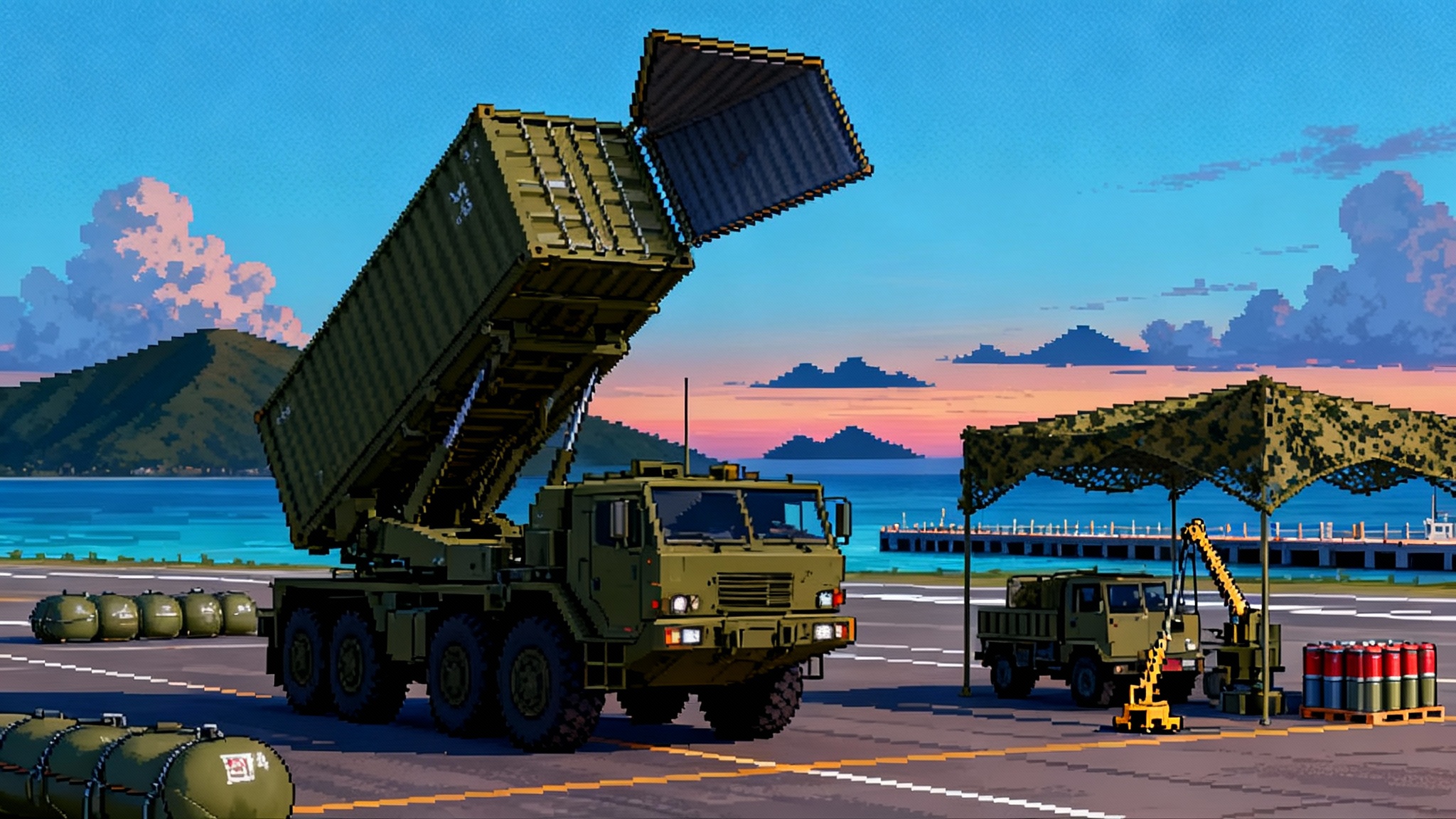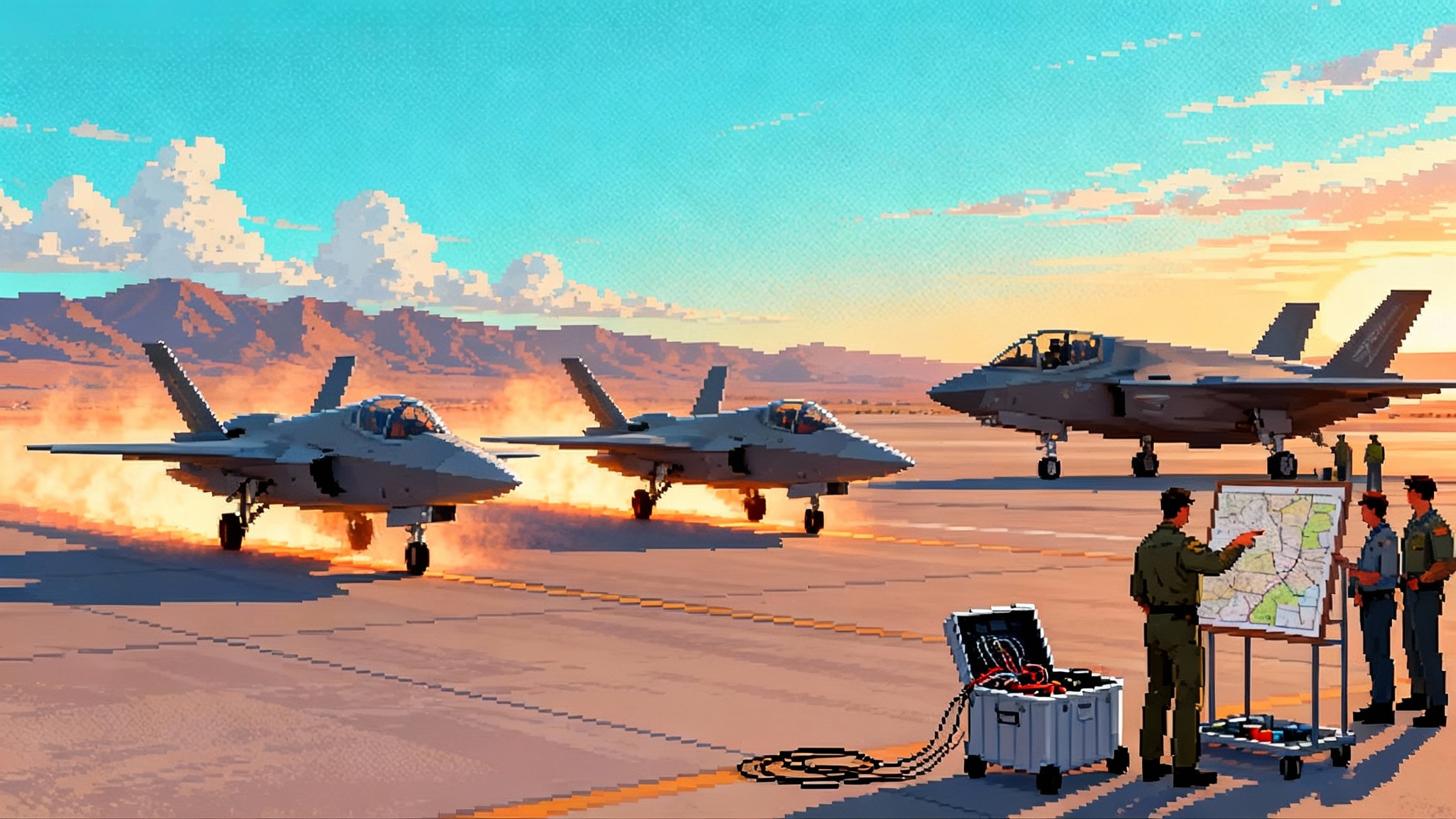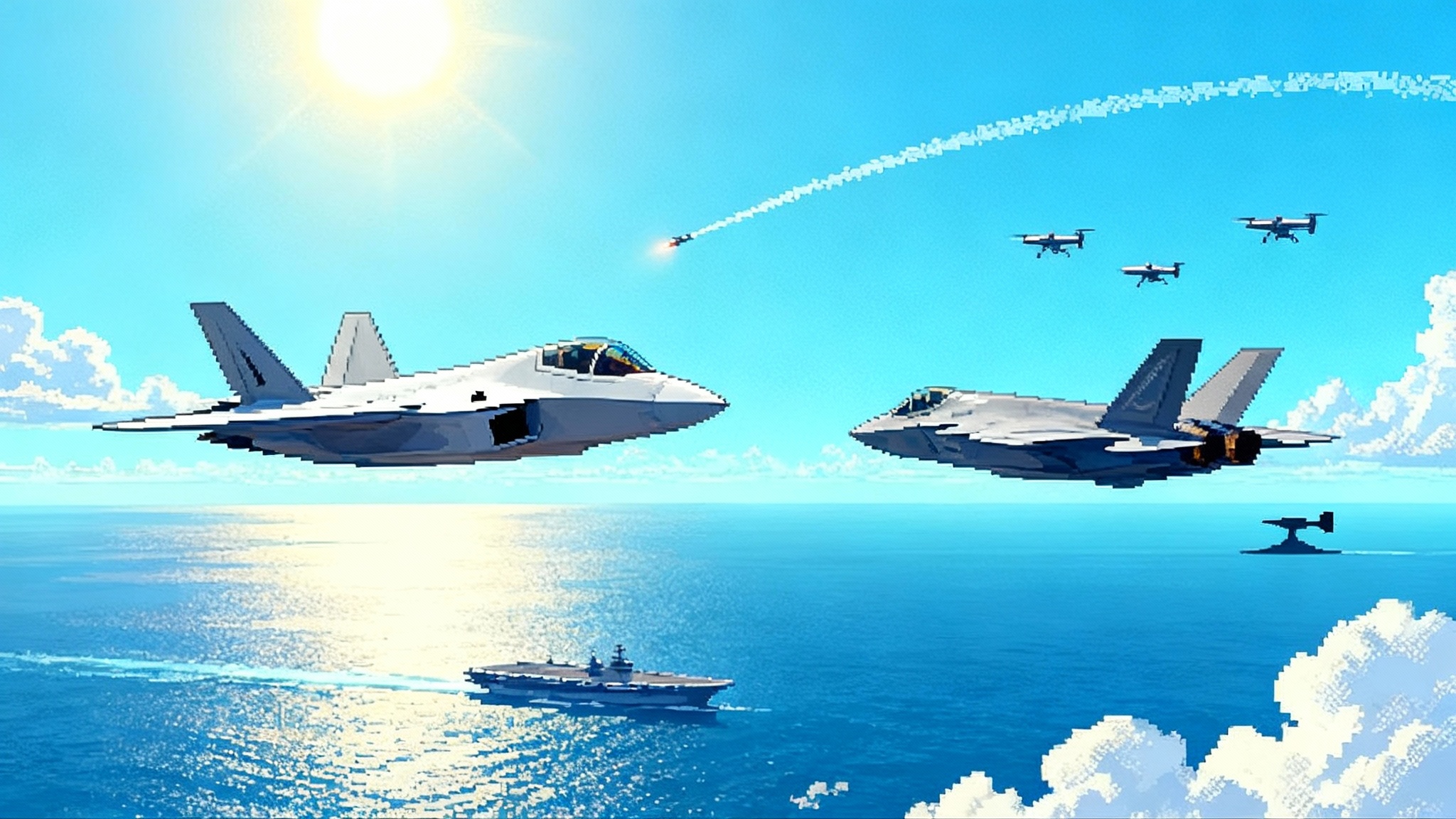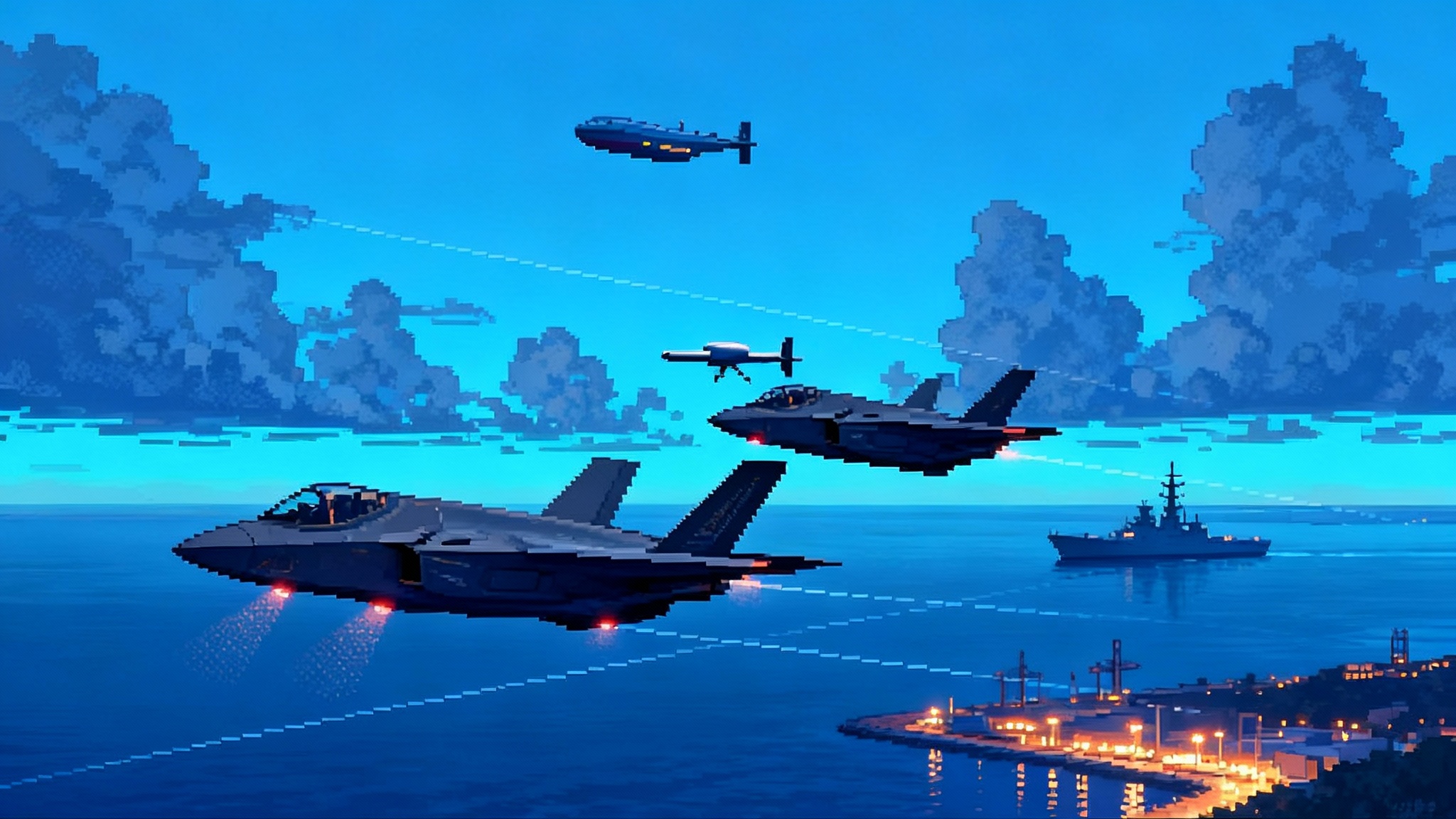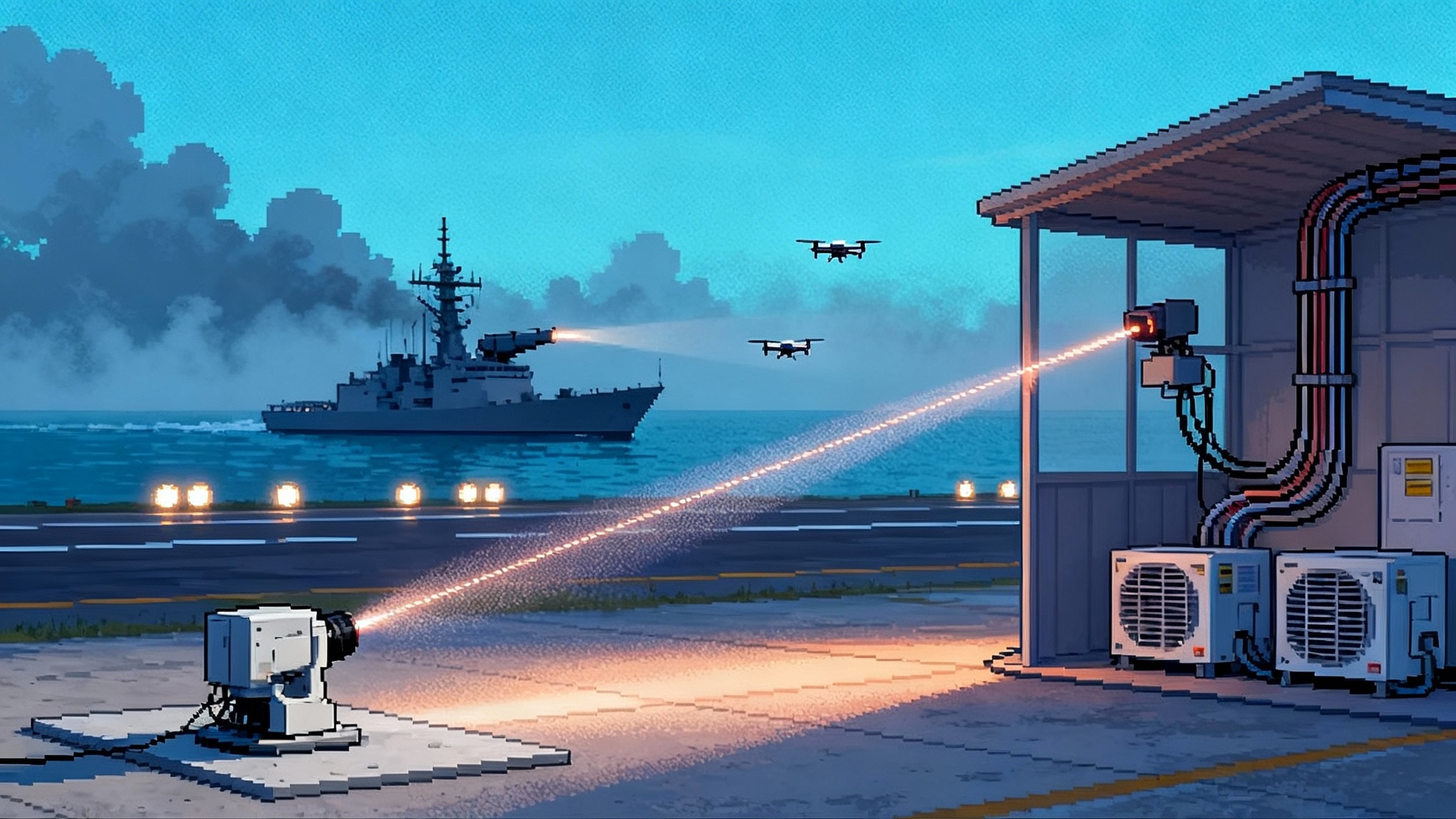Standoff Strike 2.0: JASSM‑XR and the $150k Missile Wave
JASSM-XR is nearing flight test while sub-$200k cruise missiles move from concept to production. The U.S. is shifting to range plus mass: diamond-cut precision for hard targets, backed by affordable swarms for volume.
The week the arsenal pivot came into focus
On October 15, 2025, Lockheed Martin executives said they were progressing toward the first flight test of the company’s new extreme-range cruise missile, the AGM-158 XR. The report matters because it signals more than a single milestone. It frames a broader shift in U.S. strike doctrine that blends exquisite reach with unprecedented volume. The missile, often called JASSM-XR, stretches the air-launched standoff family far beyond today’s standards and hints at how the Pentagon plans to punch through the most defended airspace on the planet. To anchor that point in the public record, Axios reported the imminent test push and noted expected government support for the trial Lockheed progressing toward XR test.
Zoom out six months and another thread becomes visible. In March, Lockheed previewed an ultra-affordable, modular cruise missile concept targeting a unit price near one hundred fifty thousand dollars, a fraction of the seven-figure price tags associated with legacy standoff weapons. That price is not a typo. Reuters described a subsonic, long-range, Common Multi-Mission Truck missile class designed specifically for mass production and rapid fielding Lockheed unveils low-cost $150,000 cruise missile.
Put those two developments side by side and you can see the outline of Standoff Strike 2.0: exquisite range and survivability for the hardest targets, paired with low-cost, modular cruise missiles for volume and effects. Range plus mass. That mix changes how the United States and its allies think about Pacific basing, fighter integration, electronic warfare resilience, magazine depth, and industrial surge.
Range plus mass, in plain language
Imagine a football team that fields both a world-class deep-ball quarterback and an army of reliable running backs. The quarterback is JASSM-XR: long reach, precision, and the ability to hit a specific receiver deep downfield despite heavy coverage. The running backs are the new low-cost cruise missiles: numerous, flexible, and capable of grinding out yards all game long. The defense must choose. Stack the box to stop the run and you get burned over the top. Drop safeties deep and the run keeps moving the chains.
In the standoff strike world, the defense is an integrated air defense system. The deep-ball is an extreme-range, low-observable weapon built for the hardest targets: hardened command nodes, integrated air defense radars, over-the-horizon sensors, and critical logistics hubs. The running game is a family of modular, subsonic cruise missiles that are cheap to build, flexible to configure, and good enough to saturate defenses, carry out suppression roles, strike soft to medium-hard targets, and force the adversary to light up their sensors.
What JASSM-XR brings to the fight
JASSM-XR extends the well-known Joint Air-to-Surface Standoff Missile family with a stretched fuselage and more fuel while keeping a heavy penetrating warhead. In practical terms, that means ranges believed to exceed 1,000 nautical miles, flight profiles designed to exploit radar coverage gaps, and the ability to hold at risk, from outside the teeth of air defenses, the targets an opponent can least afford to lose.
Three features matter most for the next fight:
- Survivability by design. Low observable shaping, terrain masking, and smart routing raise the cost of interception. Newer electronics and weapon data links in the JASSM line increase resilience to jamming and allow in-flight updates when approved, which matters against mobile or relocatable targets.
- Hard-target kill chains. A thousand-pound class penetrating warhead puts critical nodes at risk even when they sit behind concrete, earth, or steel. XR is the scalpel for the most consequential cuts.
- Platform flexibility. Bomber fleets can carry XR externally or internally depending on platform, and select fighters can play as launchers when the tactical situation allows. That flexibility lets commanders tailor mix and sortie generation to distance, risk, and target type.
The rise of the $150k modular cruise missile
A separate but complementary wave is building in parallel: long-range, subsonic cruise missiles intentionally designed to be inexpensive, modular, and built in volume. The appeal is straightforward. If you can field dozens for the price of one exquisite round, you can attack more aimpoints, soak up more interceptor shots, and complicate an enemy’s air defense plan.
The Lockheed Common Multi-Mission Truck concept illustrates this trend. It is not a boutique missile; it is an air vehicle template that can accept swappable seekers, warheads, and ranges. Configure a seeker for maritime search and you have a cheap anti-ship effector. Swap in an imaging infrared or passive radio frequency package for surface radars and you have a suppression tool. Keep the airframe constant, change the payload and mission software, and assemble at commercial-style rates. That is how you get to a price tag closer to a truck than to a fighter engine.
Kratos has joined this lane with a low-cost cruise missile revealed this fall and displayed alongside its Valkyrie unmanned aircraft. The details vary by vendor, but the common engineering choices stand out: composite airframes, commercial-derivative turbojet or small turbofan propulsion, fold-out wings for compact carriage, and compatibility with standard racks or palletized release. The point is not to beat a premium standoff missile on performance. The point is to field enough range and accuracy to matter at a price and cadence that can bend the inventory curve.
Pacific basing: turning distance into a design variable
The Pacific is a geography problem. Cities are islands of concrete separated by hundreds of nautical miles. Adversary sensors cover large arcs, and missile arcs are longer still. Range plus mass changes how commanders think about bases in this environment:
- Distribute from the start. XR-class weapons let bombers and tanked fighters launch from farther away, including from austere or alternate fields. Cheap cruise missiles stored in standard containers or pallets allow rapid dispersal to secondary airstrips or partner bases that can host aircraft for quick-turn strikes.
- Treat highways and fields as magazines. If a palletized launcher can push out low-cost cruise missiles from a transport aircraft, an amphibious ship, or even a modified ground launcher, then runways are not the only bottleneck. That reduces the targeting payoff for an opponent focused on cratered airfields.
- Separate storage from sortie. A theater can cache affordable cruise missiles on multiple islands, then flow aircraft to wherever weather, threat, and fuel lines allow. Range becomes a design variable rather than a hard constraint.
This posture also pairs well with evolving land-based fires, including land-based Tomahawk and SM-6 that widen the set of launch points across the Indo-Pacific.
F-35 and LRASM: integrating the tip of the spear
On March 4, 2025, Lockheed and the test force at Patuxent River marked the first F-35B flight carrying the Long Range Anti-Ship Missile. That milestone matters in the range plus mass framework because it turns the most proliferated fifth-generation fighter into a direct contributor to maritime standoff strike. Picture an F-35 pair vectoring at low altitude to a release point well outside a ship’s radar horizon, tossing LRASM toward a surface action group while remaining largely unseen.
As software matures, F-35 TR-3 and Block 4 upgrades will expand sensing, targeting, and weapon employment options that make each missile shot more valuable.
In the mass tier, the F-35 can carry multiple low-cost cruise missiles externally when stealth is not the dominant requirement or from a secure launch envelope. The same aircraft that scouts and cues targets can become a truck for affordable effects, maximizing the number of shots per tanker gallon.
Integration choices will be practical: internal carriage for stealth when needed, external carriage for volume when survivability margins are healthy, and teaming with bombers for missions that demand both. The better the network, the more valuable every shooter becomes.
Electronic warfare resilience: win the sensing game first
Electronic warfare is the silent referee in standoff fights. Jamming and deception try to turn precision into miss distance. Range plus mass gives commanders new ways to win the sensing game:
- Mixed seekers. A high-end XR round can use multi-mode guidance and high-fidelity scene matching in terminal, while cheap cruise missiles can carry diverse seekers in the same strike package. An adversary must jam many things at once, which is difficult and power hungry.
- Decoys at scale. Low-cost cruise missiles can be configured as decoys or as electronic support measures. If every third missile in a salvo is listening or jamming, the salvo becomes both weapon and sensor cloud.
- Networked timing. Affordable missiles with data links can be cued to arrive in waves or from angles that overload specific radars or interceptors. XR rounds can exploit the confusion by running tailored ingress routes to the primary aimpoints.
Magazine depth: solving the math problem of modern war
The hard math in a missile fight is not range, it is reload. Ships have a fixed number of vertical launch cells. Bombers can only lift so much on a sortie. Interceptors on the other side are finite too. Range plus mass changes the math because it increases shots per day and decreases dollars per shot.
- Cost dilution. A few exquisite shots for the hardest targets paired with dozens of cheap shots for everything else means commanders do not burn premium rounds on soft targets. That keeps the exquisite inventory available for the moments that decide campaigns.
- Saturation without waste. When you can afford to launch many affordable missiles, you can saturate defenses without gambling a nation’s most expensive munitions on every wave.
- Palletized and containerized options. Moving missiles as cargo and launching them from transport aircraft or surface platforms allows the theater to regenerate combat power faster than an adversary expects. The inventory becomes a regional problem to stock and shift, not a single-base problem to defend.
Industrial surge: build what you plan to shoot
No strategy survives contact with a slow factory. The United States is working through a once-in-a-generation retooling of its missile industrial base. The range plus mass approach embeds manufacturability into the design.
- Common air vehicles. The low-cost tier treats the cruise missile like a chassis with optional packages. That lets firms draw on commercial suppliers for airframes, engines, and electronics, then stamp out variants without resetting the assembly line.
- Small engines at scale. The limiting factor is often the turbojet or small turbofan. Vendors are qualifying commercial-derivative engines, simplifying engine-to-airframe interfaces, and investing in additive manufacturing for hot-section parts. The goal is thousands per year, not hundreds.
- Smart test and sustainment. Modular designs let depots swap seekers, batteries, or warheads without specialized lines. That lowers sustainment cost and makes it easier for allies to participate without duplicating an entire factory.
For a deeper look at how automation is enabling this shift, see our analysis of the factory surge reshaping missile production.
How allies plug into the new mix
Range plus mass invites allied participation at three levels:
- Launcher commonality. Many allies fly F-35, F-16, or P-8 aircraft. If the low-cost cruise missile family is rack-compatible and software-modular, allies can contribute launch capacity in a crisis without waiting for bespoke integration.
- Regional manufacturing. Australia, Japan, South Korea, and several European partners have composite manufacturing, small engine assembly, and electronics lines that could build low-cost variants locally under license. That shortens supply lines and raises combined output.
- Mission tailoring. Allies can select seekers and warheads appropriate to their geography. A maritime nation might emphasize anti-ship seekers. A country focused on air defense suppression might field passive radio frequency or imaging infrared packages. The shared chassis keeps interoperability intact while the payloads reflect local priorities.
A practical way forward is to build a common certification pipeline: validate the air vehicle once, then standardize test points for new payloads so partners can plug in sensors without starting from scratch. That is how the ecosystem grows fast and stays coherent.
What this means for planners and operators
- For combatant commanders: Treat long-range strike as a portfolio. Task XR to the few aimpoints that change the enemy’s behavior if destroyed. Use low-cost cruise missiles to create openings and to force sensor emission, then push ISR and fighters through the gaps.
- For logisticians: Pre-position pallets of affordable cruise missiles at multiple sites and practice rapid movement between islands. Use containerized storage to disguise true inventory and to complicate adversary targeting.
- For program managers: Lock in multi-year engine buys for the low-cost tier and protect critical materials for XR. Invest early in test infrastructure that can surge seekers and payloads through environmental and electromagnetic testing.
- For allies: Pick a lane now. Decide whether to contribute launch capacity, manufacturing capacity, payload development, or all three. Use combined exercises to certify tactics that mix premium and affordable missiles in the same strike package.
The next two years
Between now and 2027, watch three markers. First, the XR flight test campaign that begins with today’s range time will confirm the envelope and reliability. Second, the affordable cruise missile class will mature from demo to production lots, with unit costs tied to actual order quantities. Third, integration work will broaden the number of shooters able to carry both tiers, especially fighters that can flex between stealthy internal carriage and external carriage for volume.
The result will not be a single wonder weapon. It will be an arsenal that treats distance as merely another variable and inventory as an adaptable network. In a theater defined by water and watchful sensors, that is how you restore options at acceptable cost.
The bottom line
Standoff Strike 2.0 is not about choosing between a diamond and a dump truck. It is about pairing a diamond cutter with a fleet of reliable haulers. JASSM-XR gives the United States and its allies a way to reach into the hardest vaults from far outside the danger zone. The new class of $150k cruise missiles gives them the numbers to keep the pressure on, night after night. Put them together and you get a toolkit that can reshape the Pacific playbook, one precise cut and one steady load at a time.


